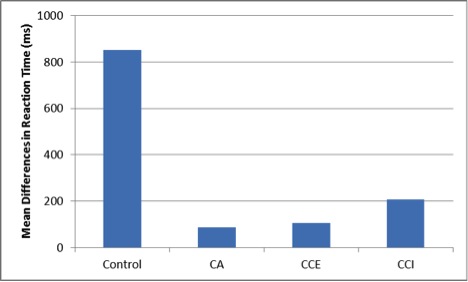Casinos offer a unique sensory experience. Previous studies have shown that the casino environment might be associated with faster betting and more risk taking than other environments (Spenwyn, Barrett, & Griffiths, 2010; Stark, Saunders, & Wookey, 1982). Other factors, such as competition among individuals (Rockloff, Greer, & Fay, 2011), also seem to influence gambling behavior, but it is not clear whether these factors work together to create harmful outcomes. In The WAGER this week, we review a study that examines how the casino environment and competition might jointly affect gambling behavior (Brevers, Noël, Bechara et al., 2014).
Methods
- The authors recruited 80 participants who did not gamble regularly from newspaper advertisements in Brussels, Belgium (average age = 22.69, SD = 6.06, 70% male).
- Participants performed the Iowa Gambling Task (IGT) on a computer. The IGT is meant to simulate the decision making that is involved in gambling. People typically take longer to respond after experiencing a loss, which researchers interpret as a healthy form of inhibition.
- The authors randomly assigned participants into one of four groups: control, casino alone (CA), implicit competition casino (CCI), explicit competition casino (CCE).
- Control: Researchers illuminated the room with a white light and did not play sounds in the background.
- CA: Researchers illuminated the room with a red light and played casino-like sounds in the background.
- CCI: Researchers set up the room the same as the CA condition. Two individuals performed the IGT at the same time; participants were not given any explicit competition instructions.
- CCE: Researchers set up the room the same as the CA condition. Two individuals performed the IGT at the same time; participants were explicitly told to try to win more money than their opponent.
- The authors measured participants’ reaction times following each outcome of the IGT.
- Each participant received €10, regardless of their performance on the task.
Results
- Participants in the two competition groups responded more quickly overall than those in the control and CA groups.
- Although control group participants were slower to respond on the IGT after losses, those in the other three groups did not vary their speed by gambling outcome (see Figure).

Figure. Differences in reaction time after receiving rewards or losses during the Iowa Gambling Task. Greater differences indicate slower responses following losses. (Estimated from Brevers et al. 2014). Click image to enlarge.
Limitations
- The red light and casino sounds were combined into a single condition, obscuring identification of which stimulus was most important.
- Participant’s remuneration was not tied to performance on the task, limiting the external validity of the experiment.
- The study population was mainly young; it is unclear how older people would respond.
- The study enrolled a small number of participants, and so it had limited power to detect experimental effects.
Conclusion
Understanding how the casino environment affects betting behavior could be important in the prevention of gambling-related problems. Participants in this study who performed the IGT in an environment with casino lights and sounds made decisions faster, generally, and failed to respond more slowly after losses. This suggests that the lights and sounds affected their post-loss behavior in a way that indicated rapid, potentially impulsive, decision-making. Additionally, participants in the competition conditions responded more quickly. These results suggest that the casino environment, especially combined with competition, might contribute to a more aggressive betting pace. Additional research that is more externally valid is needed to confirm this pilot research.
-Jed Jeng
What do you think? Please use the comment link below to provide feedback on this article.
References
Brevers, D., Noël, X., Bechara, A., Vanavermaete, N., Verbanck, P., & Kornreich, C. (2014). Effect of Casino-Related Sound, Red Light and Pairs on Decision-Making During the Iowa Gambling Task. Journal of Gambling Studies, Advance online publication. doi: 10.1007/s10899-013-9441-2.
Rockloff, M. J., Greer, N., & Fay, C. (2011). The social contagion of gambling: How venue size contributes to player losses. Journal of Gambling Studies, 27(3), 487-497.
Spenwyn, J., Barrett, D. J. K., & Griffiths, M. D. (2010). The role of light and music in gambling behaviour: An empirical pilot study. International Journal of Mental Health and Addiction, 8(1), 107-118.
Stark, G. M., Saunders, D. M., & Wookey, P. E. (1982). Differential effects of red and blue coloured lighting on gambling behaviour. Current Psychological Research, 2(1-3), 95-99.




